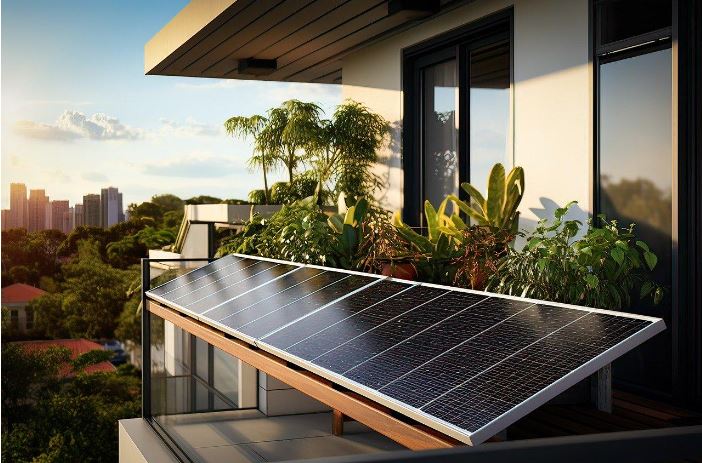
Solar Energy and Urban Planning: Integrating Renewable Power into City Design
The integration of renewable energy sources like solar power into urban planning is crucial for the sustainable development of cities. With the rise of climate change awareness and the need to reduce dependency on fossil fuels, urban planners are now looking at ways to incorporate solar energy infrastructures into the fabric of urban spaces. The execution of this transition involves a complex network of technologies, policies, and stakeholders, all working in unity toward a greener, cleaner urban future.
The Solar Revolution in Urban Environments
Solar energy and its sibling technology, batteries, are at the vanguard of the green revolution. In the urban context, harnessing the power of the sun brings unique challenges but also presents incredible opportunities to transform city landscapes.
Affordability of These Technologies
The solar and battery price landscape is increasingly attractive, offering competitive costs and enhanced value for forward-thinking businesses.
The affordability of these technologies now stands as a significant driving force behind the global solar energy boom. Governments, businesses, and communities are taking advantage of these cost reductions to install solar panels at unprecedented rates.
Architectural Considerations for Solar Integration
Architects and urban designers are adopting a new mindset that includes solar integration from the very beginning of the design process. This involves considerations like building orientation, angled roof designs, and the removal of shading elements that can obstruct sunlight. With these architectural changes, solar panels can be seamlessly built into the very structure of buildings, enhancing energy efficiency without compromising aesthetics.
The Battery Boon in Urban Planning
The advancements in battery technology have effectively solved the problem of energy storage, making solar energy more dependable. Batteries and other energy storage systems are the linchpin of the new energy paradigm, providing solar power during periods of low sunlight or high demand, which is especially critical in urban settings.
Regulation and Policy Frameworks
The integration of solar power into urban design is not just a technical issue—it’s a matter of policy. Urban planners and policymakers must craft regulatory frameworks that encourage and support the adoption of solar energy in the city.
Incentivizing Solar Deployment
Governments around the world are implementing a variety of financial incentives to promote the installation of solar panels in homes and businesses. These incentives can take the form of tax credits, rebates, or feed-in tariffs, all of which make the initial investment in solar energy more palatable for consumers.
Urban Development Codes and Solar Zoning
City planners are also updating urban development codes to make it easier to install solar panels. This may involve reducing permitting red tape, enforcing solar-ready building codes, or even requiring solar installations in new construction.
The Role of Municipalities in the Fight against Climate Change
Local governments play a crucial role in combatting climate change through sustainable urban planning. By setting ambitious renewable energy targets and creating policies that support those goals, cities can become laboratories for innovation in solar energy integration.
Community Engagement and Collaboration
Successful urban solar integration is a community effort that requires the buy-in and collaboration of various stakeholders, including residents, businesses, utilities, and NGOs.
Educating and Empowering Communities
Community engagement is essential to the success of any urban solar project. Educating the public about the benefits of solar energy, addressing concerns, and involving the community in decision-making processes can lead to more inclusive and practical projects.
Public-Private Partnerships
Public-private partnerships can leverage the expertise and resources of the private sector to implement solar projects. These collaborations can help reduce costs, share risks, and accelerate the pace of solar integration in urban areas.
The Role of Non-Governmental Organizations
NGOs and community organizations can play a vital role in advocating for renewable energy and supporting urban solar projects. Their involvement can provide a grassroots foundation for sustainable urban development.
Technological Innovation and Research
The advancement of technology is a critical component of the urban solar revolution. Research and innovation are driving the development of new solar and battery systems that are better suited for urban environments.
Smart Grids and Solar Integration
The concept of a smart grid, which integrates renewable energy sources with advanced communication and control technologies, is crucial for the effective management of solar energy in the city. Smart grids can balance supply and demand, reduce energy waste, and increase the reliability of solar power.
Building-Integrated Photovoltaics (BIPV)
Building-integrated photovoltaics (BIPV) represent a cutting-edge approach to solar integration that incorporates solar elements directly into building materials. This technology offers a streamlined and aesthetically pleasing way to generate solar power in urban areas.
Mobility and Solar
The transportation sector is a significant contributor to urban energy consumption. Solar-powered vehicles, charging stations, and other solar-assisted transportation solutions are emerging as part of the urban landscape, providing further momentum to the solar revolution.
Assessing the Environmental Impact
The environmental benefits of urban solar integration are vast and significant. By reducing greenhouse gas emissions and improving air quality, solar energy is helping to combat climate change and create healthier cities.
Mitigating Urban Heat Islands
Solar panels can also have a cooling effect on urban areas by shading buildings and reducing the urban heat island effect. This simple yet powerful contribution to local climate control can enhance the livability of cities.
Biodiversity and Green Urban Spaces
Solar integration projects need to be mindful of their impact on local ecosystems. By promoting green spaces and biodiversity, urban planners can ensure that solar developments contribute to a more sustainable and balanced urban environment.
Water and Solar
The water savings associated with solar energy, particularly in water-scarce urban areas, is an often-overlooked benefit of solar integration. Solar panels consume minimal water compared to other energy sources, making them a crucial part of water-conscious urban planning.
Conclusion
The integration of solar energy into urban planning represents a profound shift in the way we design and power our cities. With the right combination of technology, policy, community engagement, and environmental stewardship, we can create urban landscapes that are not only beautiful and functional but also sustainable and resilient in the face of a changing climate.
Cities that lead this charge will set the standard for future development, demonstrating that a solar-powered urban future is not only possible but also desirable. By harnessing the power of the sun, we can build cities that are truly fit for the 21st century and beyond. The time to act is now, and the sun is shining.



